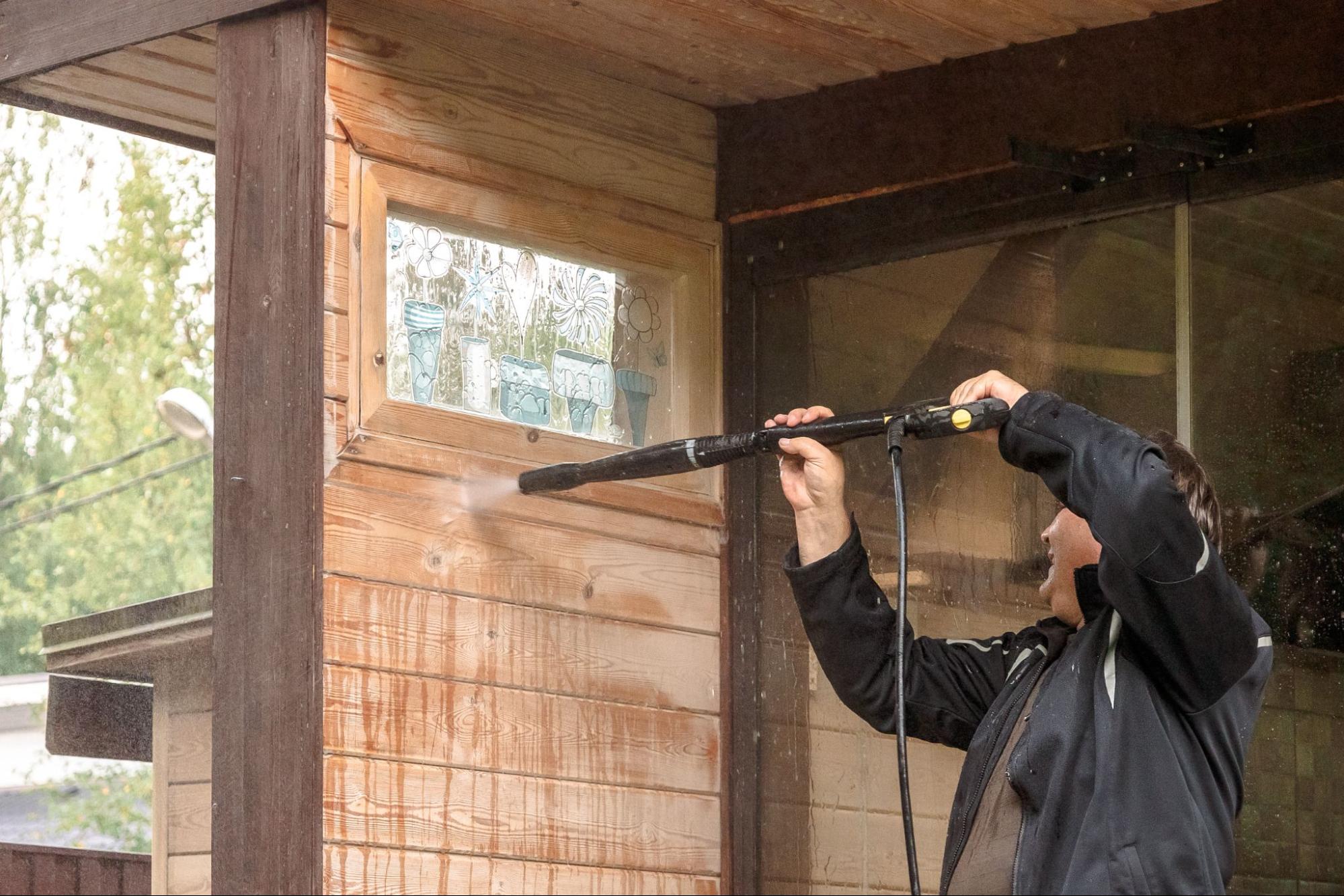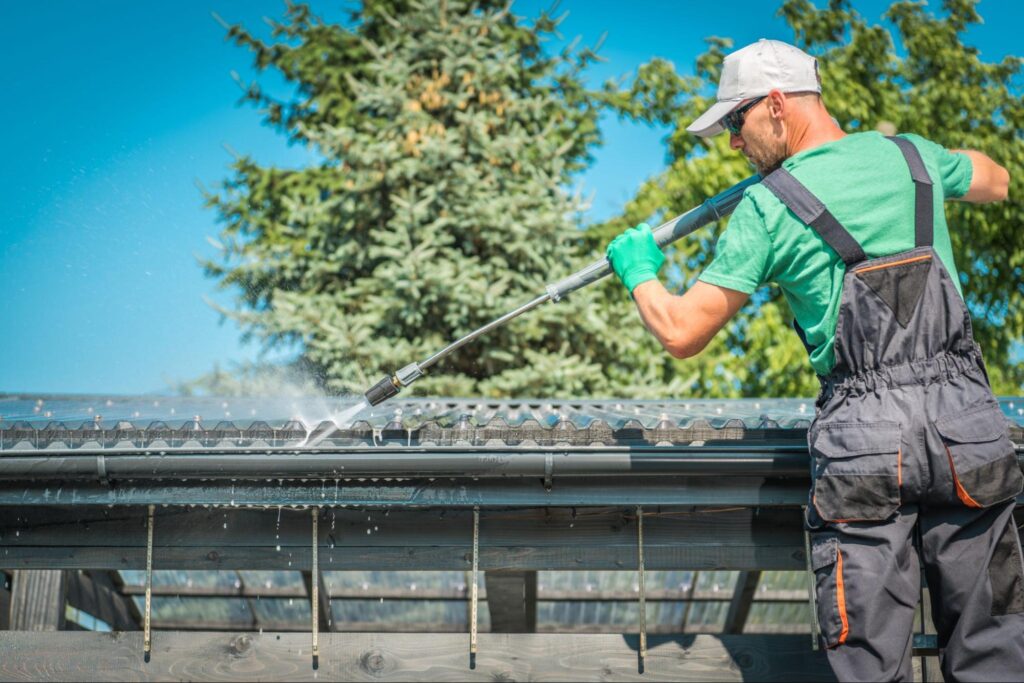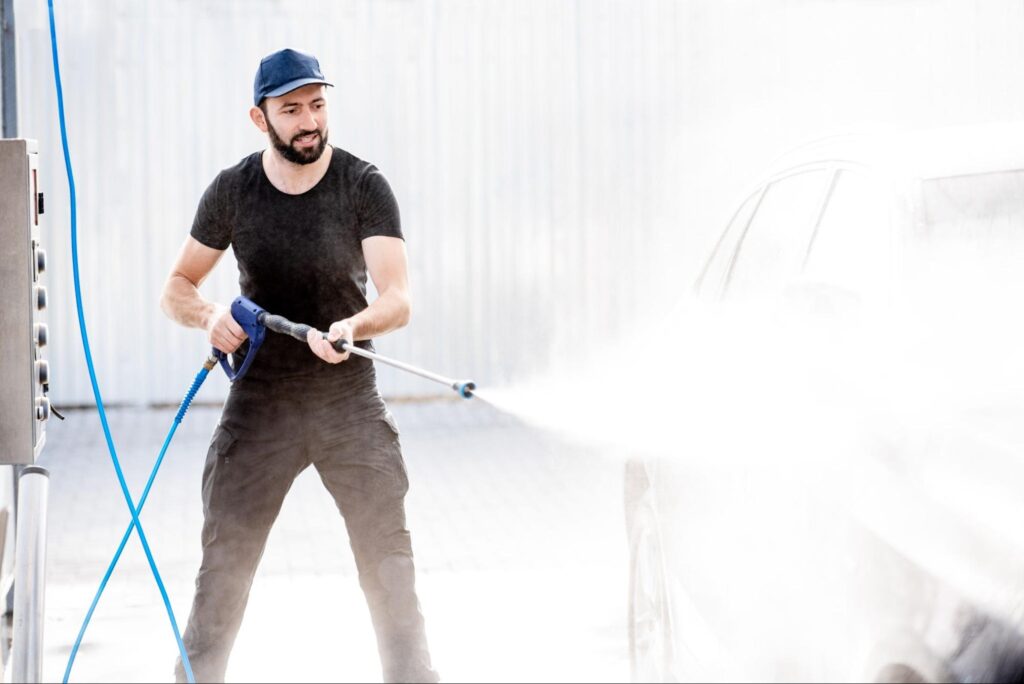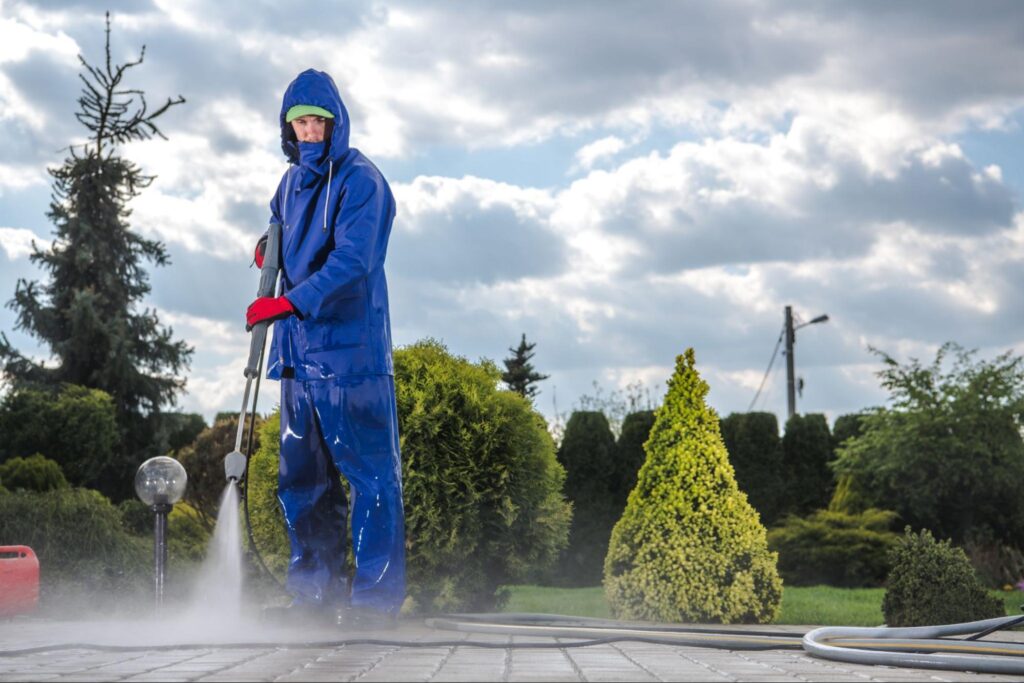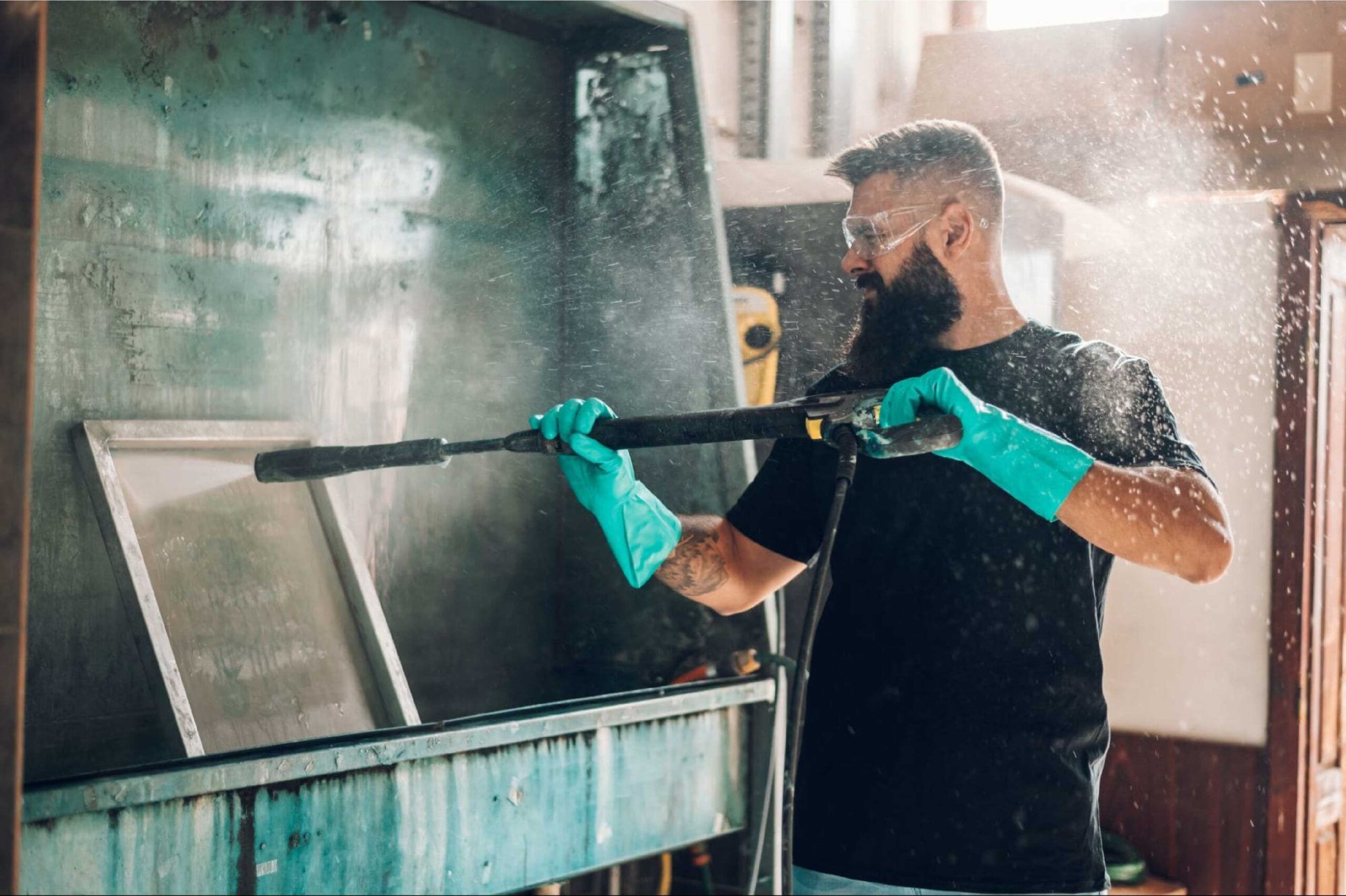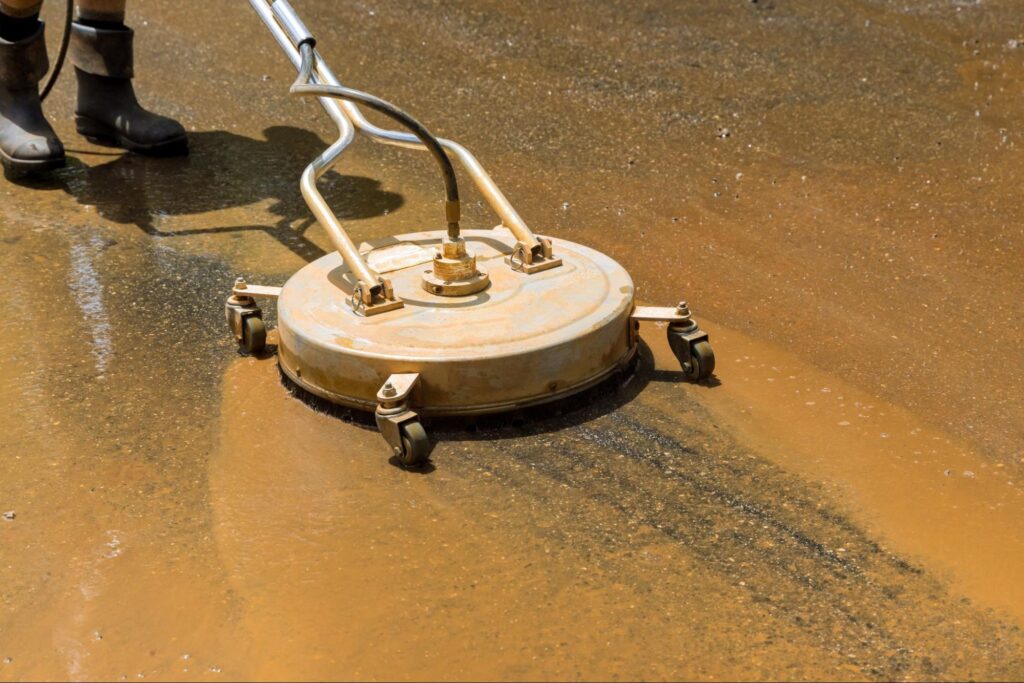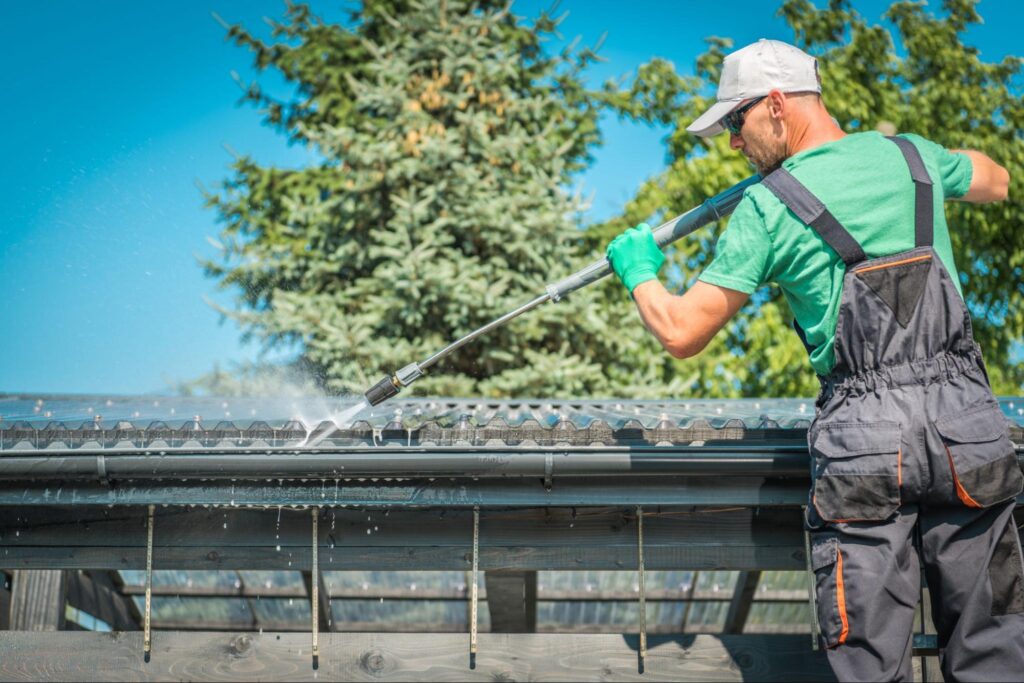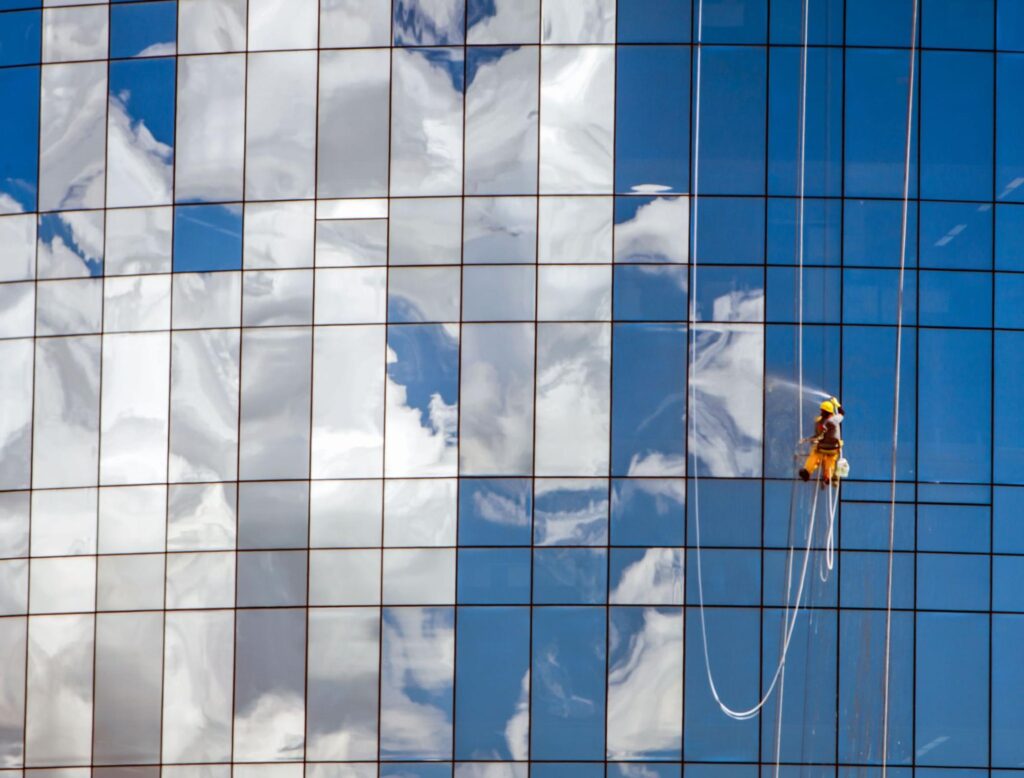Pressure Washing vs. Soft Washing: Which Is Right for Your House?
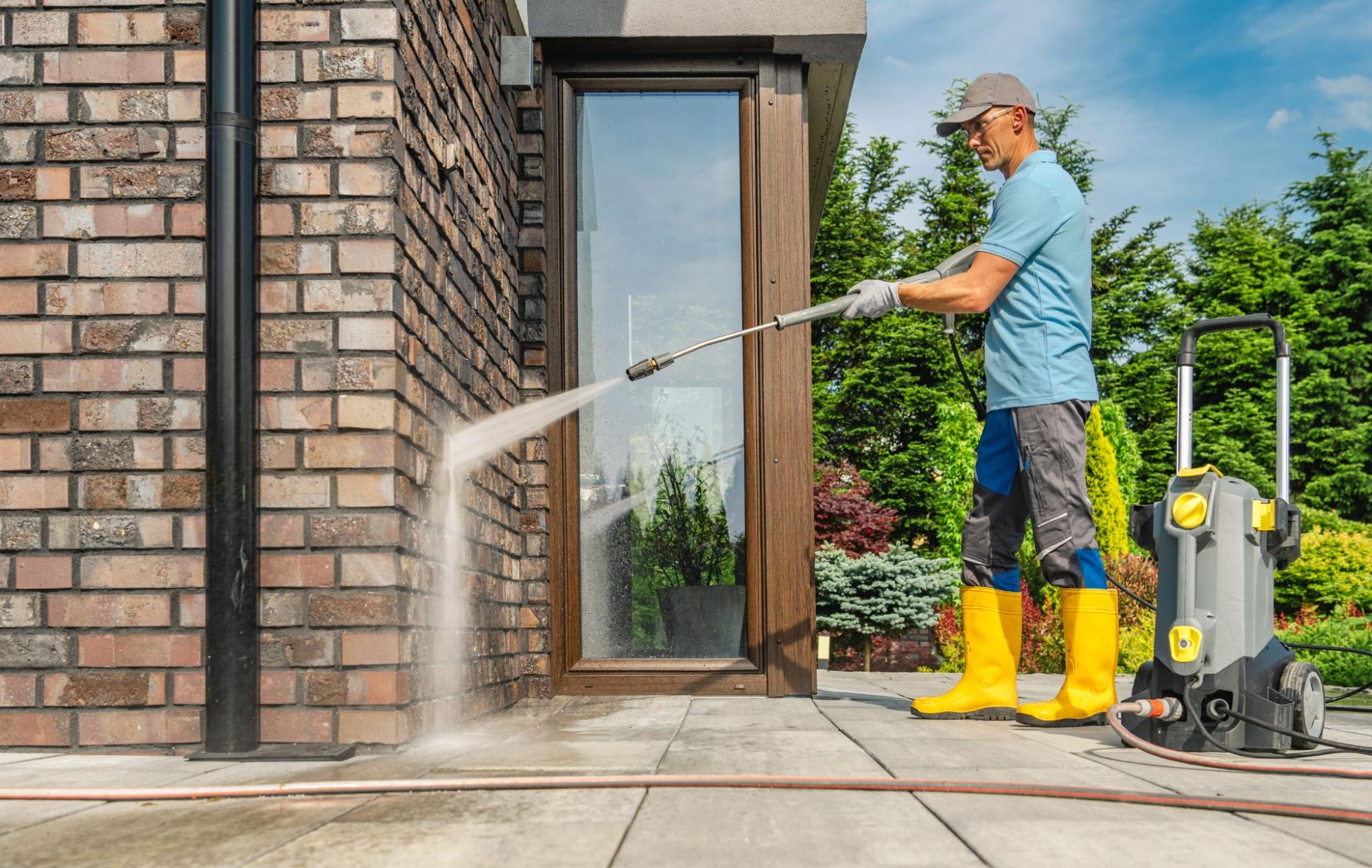
When you compare house pressure washing to soft washing, you’re weighing mechanical force against targeted chemistry. Pressure washing relies on higher water velocity to cut through grime on hard-wearing surfaces like concrete and brick. Soft washing uses low pressure paired with cleaners that break down organic growth and traffic film, making it safer for delicate materials such as painted wood, vinyl siding, stucco, and roofs. The smartest approach is not picking a single method for the entire property but matching techniques to each material so you clean thoroughly without scarring finishes or pushing water where it doesn’t belong.
Pressure Washing Equipment, Chemistry, and Water Flow
Both methods depend on the right balance of water movement and product selection, but they emphasize different levers to get results.
PSI and GPM in Context
Pressure gives cutting action while flow carries soils away; soft washing trims pressure and lets chemistry do more of the lifting.
The Role of Detergents
Surfactants and targeted cleaners loosen bonds so a lower force can clean effectively without damaging surfaces.
Heat When Appropriate
Warm water accelerates degreasers on oily slabs, while cool feeds protect coatings and sensitive seals.
Concrete, Brick, and Stone Pressure Washing
Mineral surfaces tolerate more force, which is why pressure washing shines on driveways, sidewalks, and patios. The key is controlled technique: steady pace, correct tip angle, and a surface cleaner to blend the pattern so you don’t leave tiger stripes. On brick and stone, pre-wetting joints and using moderate pressure prevents mortar erosion and preserves texture. Stains anchored by oil or rust respond best to a cleaner formulated for that contaminant, followed by a rinse that carries fines out of pores rather than letting them re-settle into a light haze once dry.
Pressure Washing on Siding, Stucco, and Painted Surfaces
Cladding and coatings ask for finesse, which is why soft washing often wins around the building envelope.
Vinyl and Fiber Cement
Use wide fans and low pressure after an appropriate pre-treat; chemistry handles mildew and soot quickly.
Stucco and EIFS
Gentle passes and longer dwell times avoid driving water into hairline cracks or behind foam systems.
Painted Wood
Lower force preserves fibers and caulk lines, and a careful rinse keeps water out of laps and joints.
Soft Washing vs Pressure Washing for Roofs and Delicate Areas
Roofs, screens, and oxidized metal are poor candidates for brute force. Asphalt shingles can lose granules, and clay or slate can chip if hit aggressively. Soft washing lets cleaners dissolve algae streaks and lichen without lifting materials or flooding underlayment. The same logic applies to oxidized aluminum, older window frames, and decorative trim, where a strong jet can leave permanent wand marks. A low-pressure application with the right cleaner, followed by a gentle rinse, restores color while keeping fasteners, sealants, and overlaps intact.
Pressure Washing Safety, Overspray, and Building Envelope
Safety hinges on controlling where water travels and how it returns to grade.
Spray Direction Matters
Work with a shallow angle so water glides over surfaces instead of into seams and vents.
Manage Overspray
Close windows, shield plants, and mind wind drift to keep cleaners where they belong.
Ground Conditions
Wet algae underfoot is slick; plan stable footing and keep hoses routed out of walking paths.
Cost, Time, and Value of Pressure Washing and Soft Washing
Time on site depends on square footage, access, and how set-in the soils are. Pressure washing with a surface cleaner can cover a driveway in minutes, which keeps costs predictable for large flat areas. Soft washing may take longer upfront due to dwell times, yet the reduced risk on finishes often means fewer callbacks and no need to repaint or re-caulk prematurely. When you consider the long game—paint longevity, preserved mortar, intact roof granules—the correct method in the right place is usually cheaper than a quick but aggressive pass that shortens the life of a finish.
Pressure Washing Decision Guide for Your House
A short checklist helps you choose without guessing, and it works elevation by elevation around the home.
Identify the Stain
Organic growth favors cleaner-forward methods; petroleum film on slabs benefits from heat and controlled force.
Know the Material
Dense mineral surfaces welcome more pressure, while coated or composite materials prefer low force and longer dwell.
Consider Access and Height
Second stories, steep grades, and fragile details nudge the choice toward low pressure from safer standoff distances.
Plan for Runoff
Where regulations apply, recovery and neutralization matter as much as the cleaning itself.
Pressure Washing Seasonal Timing and Weather Windows
Weather changes both safety and finish quality. On hot, bright days, water flashes off glass and siding, leaving spots if the feed isn’t pure and the rinse isn’t thorough; working earlier or waiting for overcast light improves inspection and results. After a storm system passes, the air clears of dust and pollen, which helps surfaces dry cleaner. Before winter, cleaning north-facing panels, steps, and gutters removes algae and debris that can trap ice and stress fasteners. Aligning method and timing with the season reduces labor and stretches the life of coatings across the whole envelope.
Equipment Add-Ons that Improve Pressure Washing Outcomes
Attachments can determine whether you finish with a uniform surface or a patchwork of shades.
Surface Cleaners for Slabs
A shrouded spinner blends the pattern and prevents striping on concrete and pavers.
Soft Wash Applicators
Low-pressure nozzles and metering valves deliver even coverage and precise dwell times.
Extension and Pivot Wands
Better angles from the ground protect siding seams and keep operators off ladders.
Common Pressure Washing Mistakes and How to Avoid Them
Missteps usually come from hurrying or using one method everywhere. Rushing a driveway pass leaves arcs that only appear when the surface dries, and pushing a narrow fan into siding laps is a fast way to wet sheathing and stain interior drywall. Skipping a pre-treat on oily stains invites ghosting that returns after drying. The cure is simple: test a small, inconspicuous area, let chemistry work, maintain a consistent distance, and finish with a thorough rinse that moves loosened fines to a place where they can’t redeposit.
When to Hire A Pressure Washing or Soft Washing Pro
Most first-floor tasks with easy access fit a capable homeowner kit, but some conditions argue for help. Multi-story elevations, delicate historic materials, heavy grease deposits, or properties governed by wastewater rules reward trained crews with heated systems, recovery gear, and experience sequencing methods without damaging finishes. A reputable provider will demonstrate both approaches, explain why one suits each surface, and deliver a plan that details cleaners, pressures, and safeguards so you can approve with confidence.
Pressure Washing for A Cleaner, Longer-Lasting Exterior
You don’t have to choose a single method for the entire property. Let hard surfaces like driveways and curbs benefit from measured force, and let low pressure plus chemistry protect roofs, siding, and trim. Match tools and technique to the material, pick weather windows that support even drying, and think about where water and cleaners travel after the rinse. With that mindset, you’ll get a brighter exterior today and a building envelope that holds up better through the seasons.
Visit the A Plus Power Cleaning blog to learn more about the different methods of cleaning your home’s exterior.
Recent Post
-
How a Gutter Cleaner Helps Protect Roofs and Foundations
-
The Difference Between DIY and Professional Pressure Wash Services
-
What Pressure Washer Companies Do and Why You Need Them
-
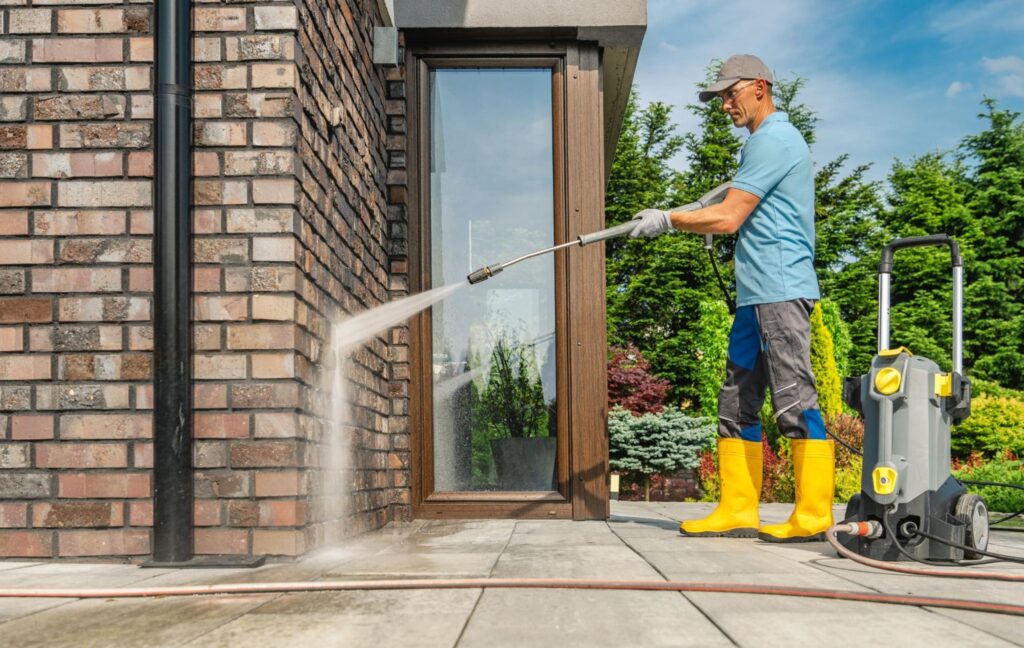 Pressure Washing vs. Soft Washing: Which Is Right for Your House?
Pressure Washing vs. Soft Washing: Which Is Right for Your House? -
Top Industries That Rely on Industrial Pressure Washing
-
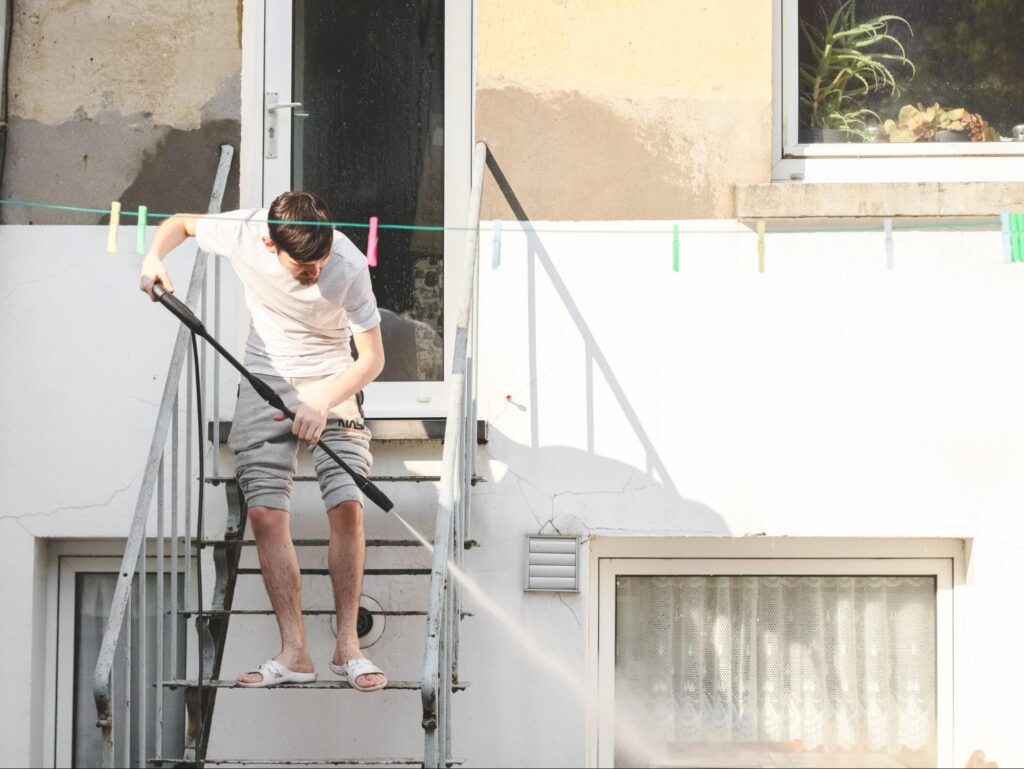 The Benefits of Using a Pressure Washer for House Exteriors
The Benefits of Using a Pressure Washer for House Exteriors -
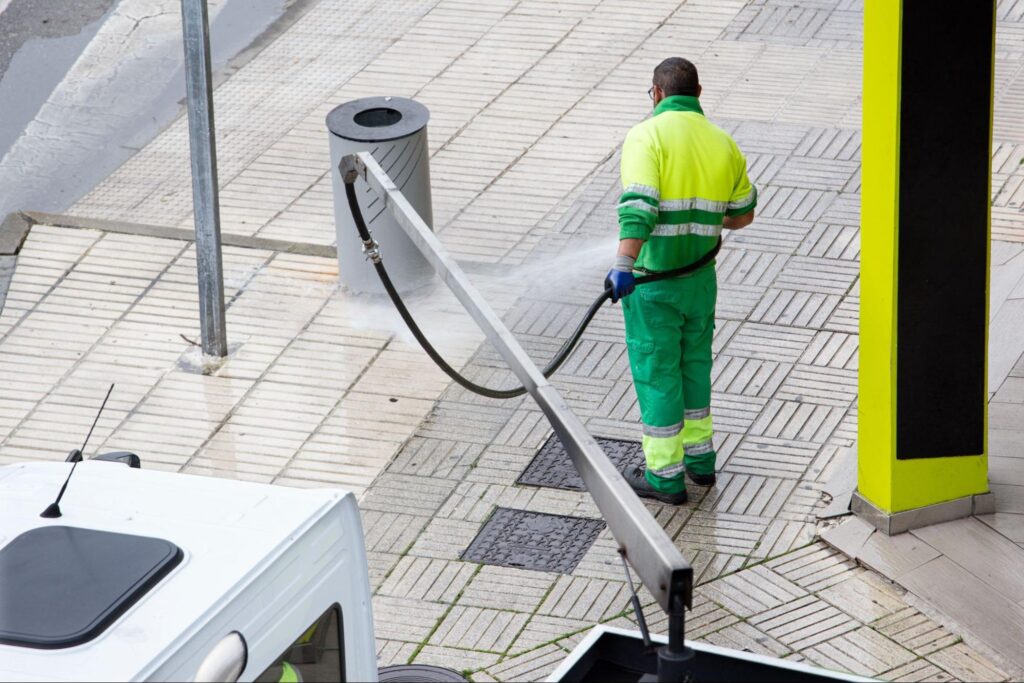 The Difference Between Residential and Commercial Pressure Washing
The Difference Between Residential and Commercial Pressure Washing -
What Is a Pressure Washer Surface Cleaner and How Does It Work?
-
The Importance of Regular Gutter Cleaning for Home Maintenance
-
How Weather Conditions Affect High Rise Window Cleaning
-
What Pressure Washing Equipment is Needed for Residential Spaces?
-
What Pressure Washing Equipment is Needed for Residential Spaces?
-
Best Times for Driveway Pressure Washing
-
Pressure Wash vs. Power Wash: What's the Difference?
-
How Often Should You Invest in Roof Gutter Cleaning?
-
Best Pressure Washing Company Near Me in Austell, GA
-
Top Power Wash Company Near Me in Chamblee, GA
-
Top Powerwash Company Near Me in Atlanta, GA
-
Top Pressure Cleaning Companies Near Me Austell, GA: A Plus Power Cleaning
-
Top Pressure Washing Companies Near Me Chamblee, GA: A Plus Power Cleaning
-
Top Pressure Cleaning Companies Near Me Atlanta, GA: A Guide to Power Cleaning Services
-
Best Electric Pressure Washer in Atlanta
-
How Much Does Roof Cleaning Cost in Marietta, GA and Atlanta, GA?
-
How Much Does Pressure Washing Cost in Georgia?
-
What is the Difference Between Power Washing and Pressure Washing
-
What Is Soft Wash Roof Cleaning
-
The Best Way to Use a Pressure Washer Surface Cleaner
-
Gutter Cleaning Services
-
Exterior House Cleaning in Roswell, GA


